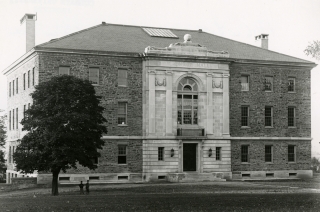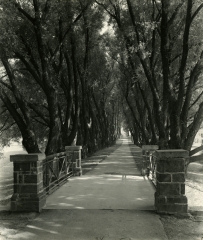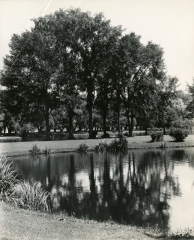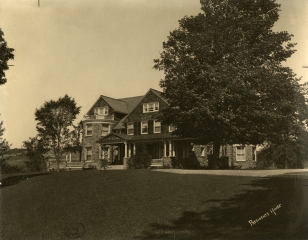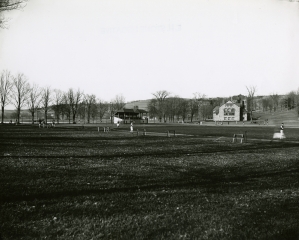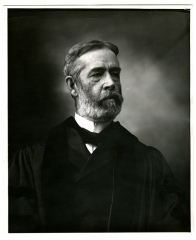under Professor Thomas were among the most popular. Students saw them not only as a means for learning skills useful after college but also as training for the several oratorical and debating contests which engendered as much undergraduate enthusiasm as intercollegiate athletic competition.
To relieve Professor Moore of his courses in French, Frank C. Ewart, a Denison graduate who had studied at Chicago and Heidelberg, joined the faculty in 1899. In 1900 he added Spanish and in 1903 Italian and in 1907 seems to have introduced the use of the phonograph for instruction in speaking.
The arrival in 1903 of Everett W. Goodhue, a Dartmouth alumnus, to teach economics and sociology enabled Professor Spencer to offer additional history and political science courses until his departure in 1905 to become one of Woodrow Wilson’s preceptors at Princeton. His successor was Adna W. Risley, A.B., Colgate, 1894, who had studied at Chicago and whose modern approach is indicated by the “Catalogue”
(1906-07) statement that the basic course in political science emphasized “practical citizenship”
rather than “Theoretical government”
and featured student reports on the government of their own localities.
Additions to the Science and Mathematics staff included: Roy B. Smith of the University of Michigan, who had studied at Heidelberg, in Chemistry; Arthur W. Smith, Chicago, in mathematics; and Harold O. Whitnall, Ph.B., Colgate, 1900, who did postgraduate work at Harvard, in geology and biology. They were promising young men hired to assist Professors McGregory, Taylor and Brigham, and were to round out their own careers as worthy successors to the earlier generation. Herman T. R. Aude, Colgate, 1905, who was in the group from 1905 to 1907, returned in 1920 to teach mathematics until his retirement in 1949. Mention should be made also of Albert B. Stewart, more nearly a contemporary of Taylor’s, a graduate of Bucknell, who came into the Department of Mathematics in 1909, after a career which covered secondary education in Pennsylvania and at Colgate Academy.
No newcomer of the Merrill period made a greater mark on Colgate than Ellery C. Huntington who arrived in the fall of 1900 to take the place of George W. Banning as Instructor in Physiology and Hygiene and Director of the Gymnasium. Inheriting the title of “Doc”
from his predecessor who was an M.D., he quickly won the esteem and affec-

